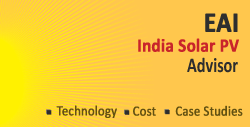SOLAR POWER SATELLITE(SPS) & WIRELESS POWER TRANSMISSION(WPT)
ABSTRACTSolar power satellite (SPS),combined with Wireless power transmission (WPT), offers the far potential to solve major energy problems on earth.
A solar power satellite (SPS) is a satellite dedicated to collecting solar energy on orbit, transforming it into microwave or laser energy, and beaming it to a receiving station on the ground. The transmitted energy is converted into DC or AC power for consumer use.
It is known that electromagnetic energy also associated with the propagation of the electromagnetic waves.We can use theoretically all electromagnetic waves for a wireless power transmission (WPT). The difference between the WPT and communication systems is only efficiency. Typical WPT is a point-to-point power transmission.
Advantages of SPS over Earth based solar power:-
- More intense sunlight
- Waste heat is radiated back into space
- No air or water pollution is created during generation
Wireless power Transmission:-
“How the power gets to Earth from the Satellite?”
- Solar power from the satellite is sent to Earth using a microwave transmitte
- Received at a “rectenna” located on the Eart
- An antenna comprising a mesh of dipoles and diodes for absorbing microwave energy from a transmitter and converting it into electric power.
- Microwaves are received with about 85% efficiency
- 95% of the beam will fall on the rectenna
CONCEPT
As a consequence of an ever-increasing world-wide energy demand and of a need for a “clean” energy source, the Solar Power Satellite (SPS) concept has been explored by scientists and engineers.Several candidate systems have been proposed but so far neither constructed nor tested in space. In a typical SPS system, solar energy is collected in space by a satellite in a geostationary orbit. The solar energy is converted to direct current by solar cells, and the direct current is in turn used to power microwave generators in the gigahertz frequency (microwave) range. The generators feed a highly directive satellite-borne antenna,which beams the energy to the Earth. On the ground, a rectifying antenna (rectenna) converts the microwave energy from the satellite to direct current, which, after suitable processing, is fed to the terrestrial power grid. A typical SPS unit - with a solar panel area of about 10 kms, a transmitting antenna of about 2 km in diameter, and a rectenna about 4km in diameter - may yield an electric power of about 1 GW. Two critical aspects that have motivated research into SPS systems are the lack of attenuation of the solar flux by the Earth’s atmosphere and the twenty-four-hour availability of the energy, except around midnight during the equinox periods.
Among the key technologies involved in the SPS are :-
- Microwave generation
- Transmission techniques
- Wave propagation
- Antennas
- Measurement techniques and
- Calibration techniques.
ECONOMIC ISSUES
There are four main factors that determine the energy production costs of an SPS & WPT system:-
- Photovoltaic module efficiency and costs.
- Mass-specific power production (W/kg)of the solar modules
- The transmission system
- Microwave power transmission efficiency and
- Launch costs.
All these assumptions lead to an estimated power-generation cost of an SPS & WPT system of approximately , `4-8 /kWh .
CONCLUSION
The world environment is degrading, and all efforts must be made to invert the current situation. The reduction of CO2 emission is a difficult task considering the dependence on the energy as a result of our present way of life.
The WPT is very old concept with newest technologies. We can advance energy systems from RF-ID to the SPS. The SPS is the largest and most suitable WPT application.To realize the commercial SPS, there are some research subjects to solve in order to decrease its cost.We have already achieved a point-to-point WPT in 1970’s. We have also achieved a phased array technologies with low efficiency. The problem in order to realize the SPS is high efficient phased array for the WPT. The higher efficiency can suppress a cost of the SPS. There are some methods to increase the efficiency of the WPT. One is a superconducting to reduce a loss in resistance. The other is an achievement of higher accurate beam control to reduce a loss in beam focusing.New semi-conductor device is expected for increasing the DC-RF and RF-DC conversion efficiency. The SPS is future system. Based on the WPT application on the ground, we have to advance the WPT technologies.
In order for SPS to become a reality it several things have to happen:
– Government support
– Cheaper launch prices
– Involvement of the private sector
Om prakash
sudhir.om@gmail.com
Dept. of EEE(Final year)
Session- 2007-11.
VMKVEC,SALEM









 Free EAI Newsletter
Free EAI Newsletter
